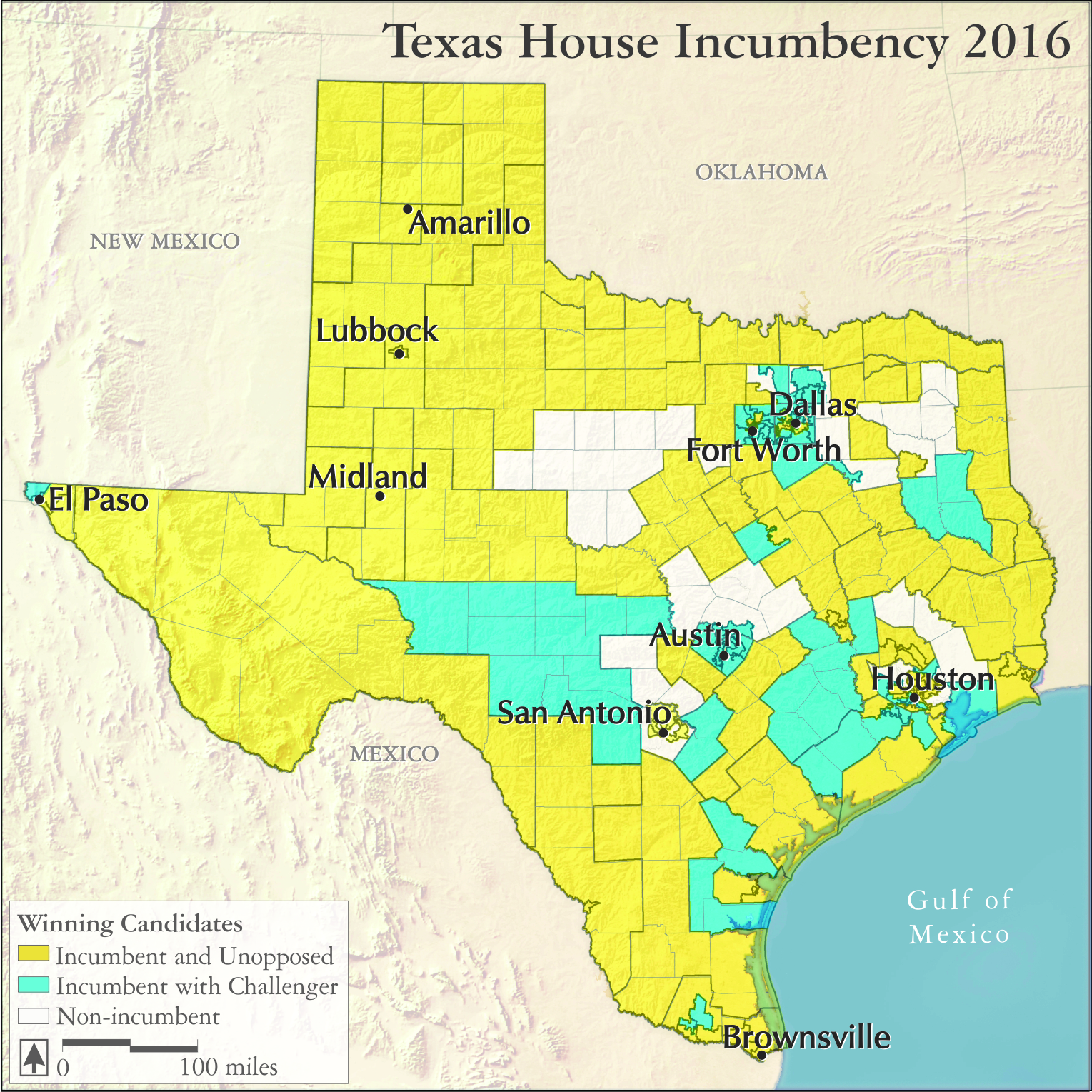
It is difficult to change our minds, to abandon the status quo and to adapt to new realities. This is true in both personal and political realms. For instance, it is very hard to challenge incumbent officeholders.
Texas provides an example. During the 2016 State House races, 150 seats were up for grabs. 124 of those, or 83%, went to incumbents. And the average margin of victory was immense: 37% for all opposed races, 71% if both opposed and unopposed races were taken into account. Fully 81 positions, or 54%, went to a victor who was unopposed.
Incumbency has its rewards, regardless of party affiliation. 83% of Republican winners in the 2016 Texas state House races were incumbents; while 82% of Democrats who won were incumbents (please see this map of the red and blue teams). Incumbency was often the winner on both sides of the aisle.
Supporting incumbents can be seen as a deserving reward to experience and seniority, or just a nod to familiarity and name recognition. Or it may be a sign of the ease of fundraising for representatives with networks of donors carefully built up over many years. For example, Texas House incumbents raised 4.5 times what their 2016 challengers managed to collect.
However, this pattern of strong incumbent control can make it very difficult to deal with conservation topics. Incumbency gives little incentive to have substantive, but risky, discussions with the electorate, or with other legislators, about complicated, challenging issues.
Source:
National Institute on Money in Politics. 2019. Election Overview. https://www.followthemoney.org/tools/election-overview?s=TX&y=2016# (Accessed February 5, 2019).
Office of the Secretary of State. 2016. Race Summary Report: 2016 General Election, 11/8/2016. https://elections.sos.state.tx.us/elchist319_state.htm (Accessed February 5, 2019).
